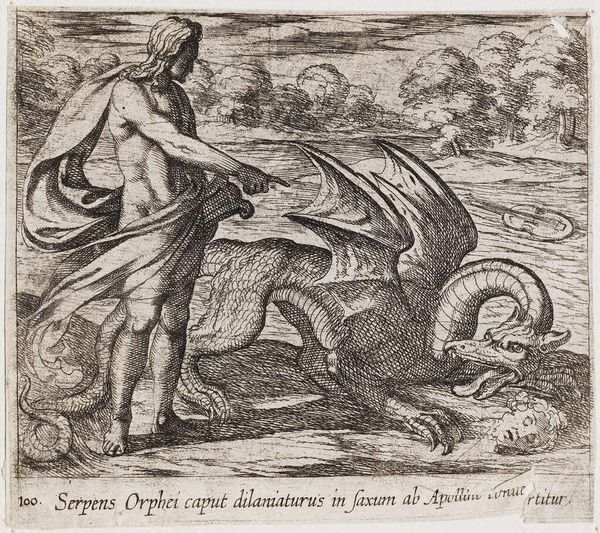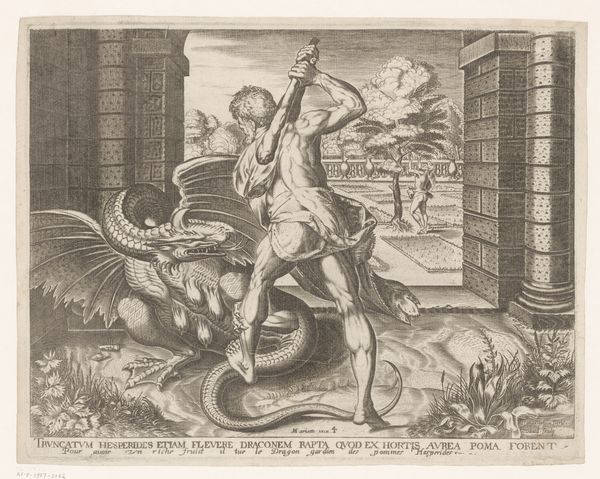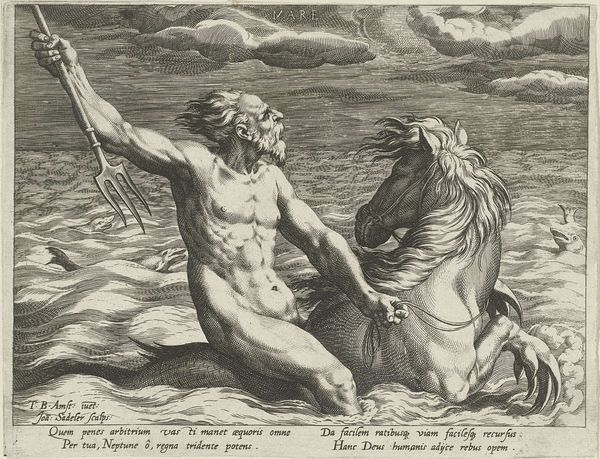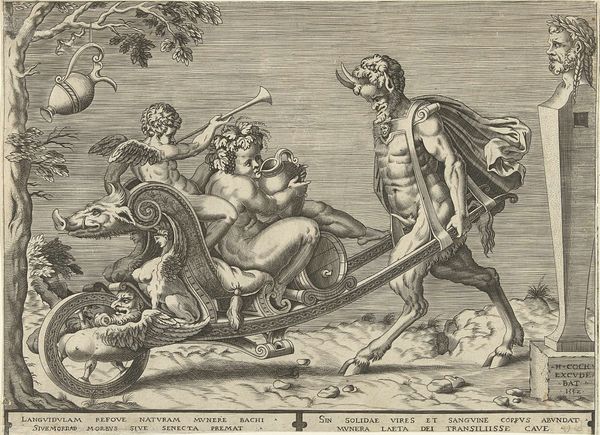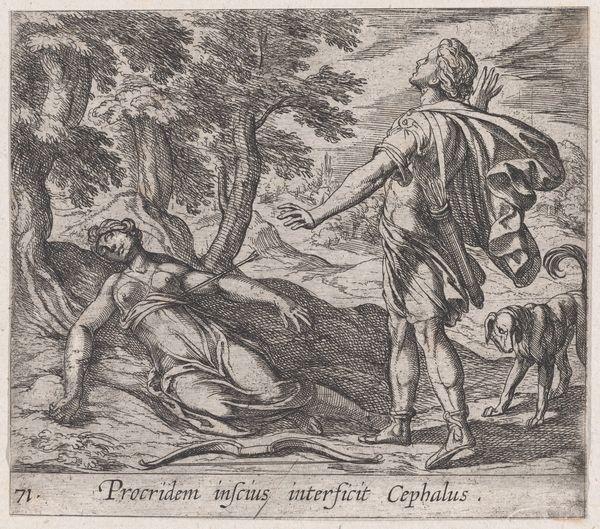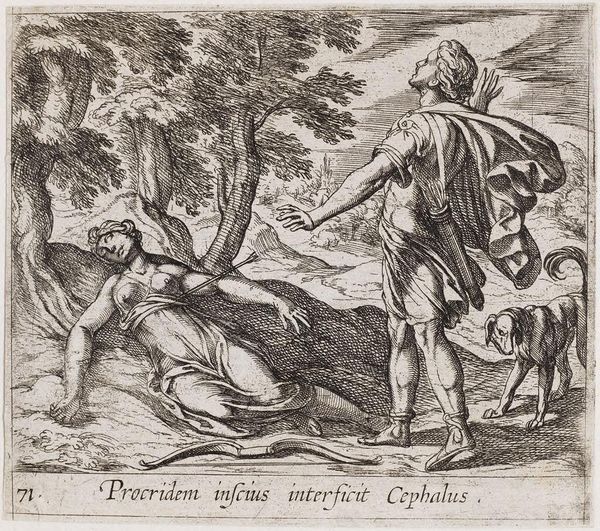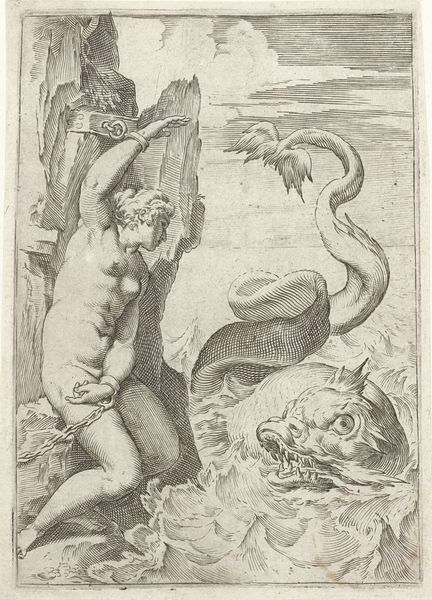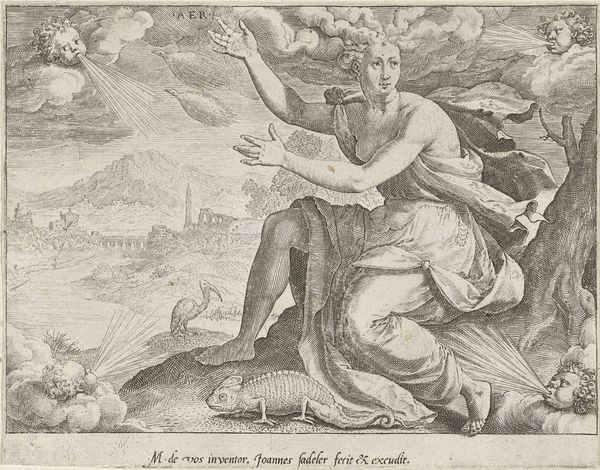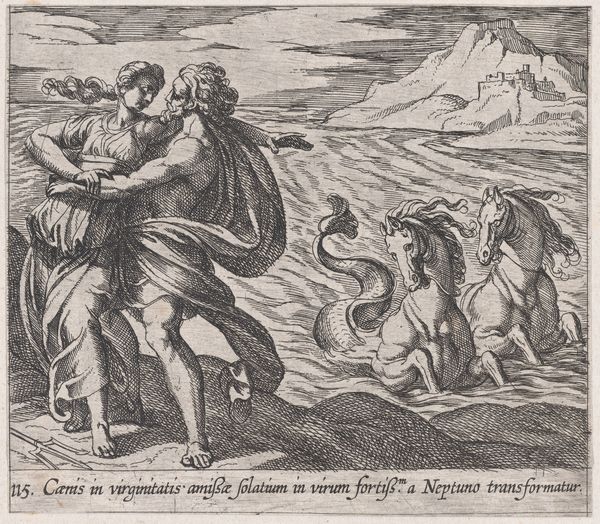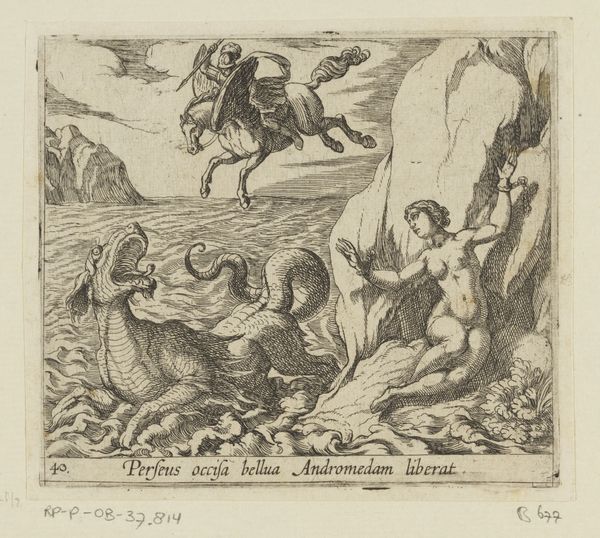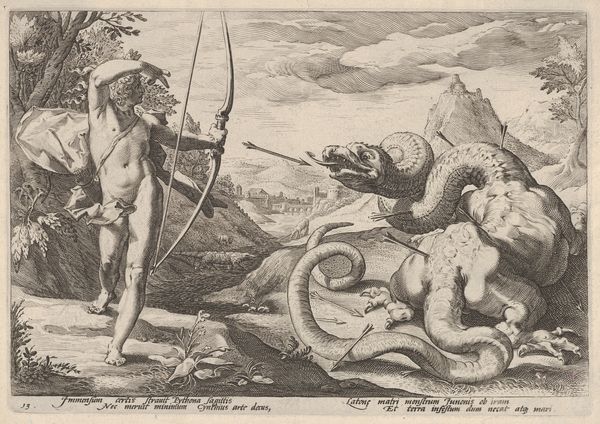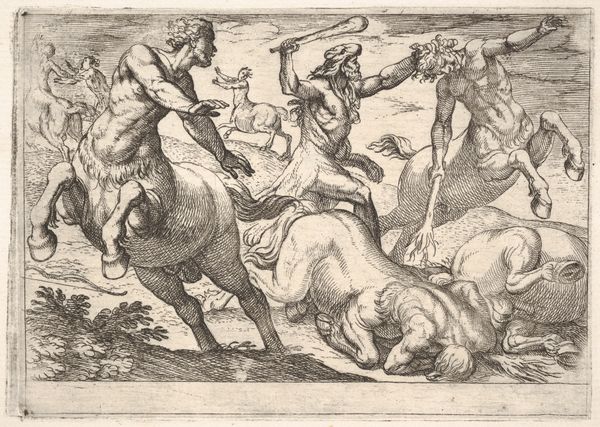
Plate 100: Apollo Killing the Serpent Attacking Opheus's Head (Serpens Orphei caput dilaniaturus in saxum ab Apolline convertitur), from Ovid's 'Metamorphoses' 1606
0:00
0:00
drawing, print, engraving
#
drawing
#
baroque
# print
#
figuration
#
history-painting
#
engraving
Dimensions: Sheet: 4 in. × 4 1/2 in. (10.1 × 11.5 cm)
Copyright: Public Domain
This engraving by Antonio Tempesta illustrates a scene from Ovid’s ‘Metamorphoses'. Made sometime between 1575 and 1630, it depicts Apollo intervening to stop a serpent from devouring the severed head of Orpheus. The story of Orpheus is a potent exploration of gender, sexuality, and power. After Orpheus is torn apart by a group of Maenads (frenzied women), his head continues to sing as it floats down the river. This challenges the traditional view of male strength and dominance, suggesting that even in death, Orpheus's voice—his art—retains power. Tempesta, working in a time of strict social and religious norms, perhaps used this mythological scene to subtly question societal expectations around gender and artistic expression. Apollo’s intervention can be seen as an attempt to silence the disruptive voice of Orpheus, reinforcing traditional hierarchies. The image resonates as a symbolic representation of the struggles faced by those who defy conventional roles, whose voices are often suppressed by dominant forces.
Comments
No comments
Be the first to comment and join the conversation on the ultimate creative platform.
